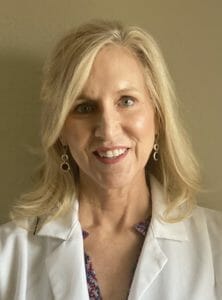
Between one-half and three-quarters of seniors living in nursing communities fall every year, and experts say soaring rates of fall-related death and injuries are one of the most significant health issues facing today’s aging society.
The good news: many falls can be prevented with proactive screening and intervention programs that address their numerous causes – from underlying medical conditions and medication side effects to issues as simple as bad lighting to poorly placed rugs or furniture.
To prove the effectiveness of such programs, I recently led a project in three senior communities in Colorado, where we helped reduce falls by a third and fall-related hospitalizations by 100%.
The results underscore just how important it is to remember that falls aren’t a regular part of aging. And the best falls prevention programs focus on stopping them before they happen.
That means screenings must be done regularly to identify residents at risk. Besides asking residents on every visit if they have had a recent fall, we conduct quarterly assessments and discuss resident status with the facility nurses, therapists and staff on every visit.
We also help communities develop their own screening programs. Among the must-dos:
- Medication reviews
Many medications seniors take for chronic conditions like blood pressure, cardiac issues, pain, depression and anxiety can increase their risk for falls. Even over-the-counter medications like allergy medications and anti-inflammatories negatively impact fall rates. Therefore, it’s important to know everything a resident is taking and to review dosages to ensure medications are being maximized before introducing more.
- Vitamin D screening
Many residents, particularly those with chronic conditions, often have very limited sun exposure. Vitamin D deficiencies contribute to orthostatic hypotension, which can make people feel off-balance or dizzy. Therefore, it’s important to get a baseline reading of resident vitamin D levels to ensure they are not deficient.
- Therapy
Therapy and exercise are key to keeping muscles strong. Many communities have weekly exercise classes and access to therapy services. One organization I work with has weekly exercise sessions where residents also get screened at that session. If residents are having weakness or balance issues, then they will set up a therapy session. If they don’t have on-site therapy, it’s beneficial to have a relationship with a company that can come in to help identify residents who need services.
While some falls may result in only minor bumps or bruises, we should never normalize falls. And every fall should be treated as if it’s a change in condition. Look for the root cause.
Was it a near syncopal episode? Is there something cardiac going on? Is it environmental? Does the room need better lighting or need to be reorganized? What else might be contributing? Are they rushing to the bathroom because of urgency issues? Are their toenails overgrown, causing pain or gait disturbance when they put on their shoes?
Continuing education, communication and collaboration are also key to improving falls management. For instance, during my study, I found that many clinicians were reluctant to discontinue or reduce high fall-risk medications.
Reporting falls is also imperative. We use every touch point with our members – whether it’s a comprehensive visit or if we’re just talking to them about their medications – to talk about their fall risk and the importance of reporting it, even if they didn’t have an injury.
Effective fall prevention is about taking the proactive, rather than reactive, approach. And having an effective fall prevention program at the forefront is critical for all providers who care for the elderly.
Sue Miller, DNP, NP-C, is the director of clinical operations external business with Optum Home and Community Care. She partners with Optum’s external business partners to drive clinical and quality initiatives in assisted living and long-term care communities.
The opinions expressed in McKnight’s Long-Term Care News guest submissions are the author’s and are not necessarily those of McKnight’s Long-Term Care News or its editors.





